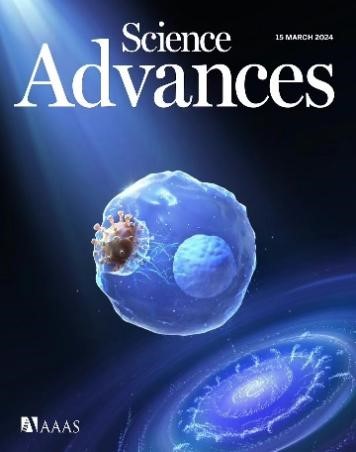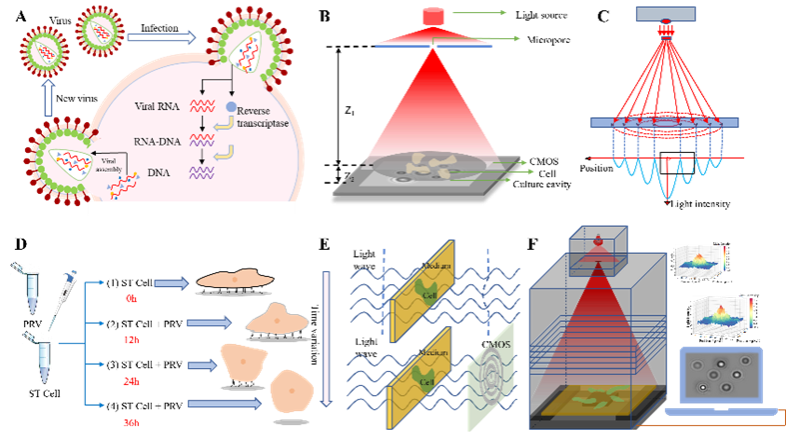On Mar. 15, a research paper titled “Virus detection using light diffraction fingerprints for biological applications” by Prof. Yang Ning's team from School of Electrical and Information Engineering of Jiangsu University (JSU) was published in the journal of Science Advances. The research findings were featured as the cover of the issue. Jiangsu University was credited as the leading institution for the research. Li Tongge, a doctoral student from School of Electrical and Information Engineering, is the first author, while Prof. Yang Ning is the first corresponding author. Additionally, Prof. Zhang Xingcai from Harvard University contributed as the co-corresponding author.


Effective assessment of the cell infection virus status is one of the challenges in the fields of virus prevention and control, veterinary drug screening, as well as plant and animal breeding. Viral diseases exhibit high mutability, instability, and infectiousness. To overcome the limitations of existing methods for rapid, high-throughput, and continuous monitoring of cells infected with virus, this study took porcine pseudorabies virus (PRV) as an example to infect swine testicle cell line (ST). By leveraging the virus light diffraction fingerprint of cells under virus stress, the viral infection process was visualized in a high-throughput manner. Furthermore, an online localization detection system for virus-stressed cells based on lens-free diffraction was developed.
The research demonstrates that this method exhibits a linear correlation of 98.9% with the existing “gold standard method” detection method. This achievement offers several notable advantages over other technologies, including high automation, high throughput, and low detection costs. By providing a new approach for the online determination of virus infection in cells, this research enables the timely detection, containment, and inhibition of viral diseases. Furthermore, it introduces fresh ideas for disease detection in animals and plants, as well as cytovirology research in the agricultural engineering field. Additionally, the model established in this study presents a novel perspective for selecting desirable livestock and poultry breeds at the cellular level.
In recent years, Prof. Yang Ning's team has conducted extensive research, specifically focusing on the detection of fungal spores in the field of agricultural engineering, plant and animal virus aerosols, utilizing multispectral diffraction imaging technology. The team has been successful in securing more than 10 projects, including the 14th Five-Year Plan National Key R&D Program for Young Scientists and the Jiangsu Provincial Outstanding Youth Program. Their work has resulted in the publication of over 30 articles in SCI journals, making a significant impact in related fields both domestically and internationally.
This work was funded by the National Key Research and Development Foundation and the National Natural Science Foundation of China.

